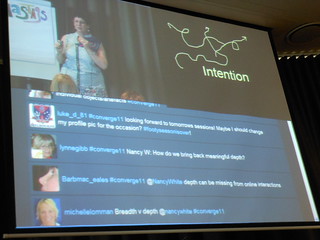 While under discussion between coaching theorists and practitioners, there are some core competencies that most will agree contribute to being an effective coach. These core competencies are the ‘things a coach does’ before, during and after a coaching session, and comprise coaching knowledge, skills, attitude and behaviour (Southern Institute of Technology, n.d.).
While under discussion between coaching theorists and practitioners, there are some core competencies that most will agree contribute to being an effective coach. These core competencies are the ‘things a coach does’ before, during and after a coaching session, and comprise coaching knowledge, skills, attitude and behaviour (Southern Institute of Technology, n.d.).
I’d like to focus on two competencies that I feel are possibly the most challenging. The first is listening (ICF, n.d.). The ability to listen involves the related skills of active listening and questioning. Active listening also has many different interpretations, but essentially includes three aspects: comprehending, retaining and responding. Going hand-in-hand with active listening is questioning. Questions are part of our everyday lives, and we can’t really communicate without them. Question types that are common include, probing, elaborating, hypothetical, clarification, planning and strategic.
The tough part is being fully ‘there’ while your coachee is speaking, listening for what is and isn’t being said. You also need to be able to understand what is meant within the wider context of your coachee’s aspirations - while also choosing powerful questions to help your coachee express themselves and dig deeper into their area of focus.
Sometimes active listening will also require a coach to leave space for their coachee to download what’s on top, without passing judgement or making comment (ICF, n.d.). Imagine working with someone with whom you have developed a strong professional relationship, such that you care a lot about their welfare. They then share a situation in their professional or personal life that is affecting them deeply. You have to be able to listen while keeping your own opinions firmly off the table, while listening to hear what is being said, as well as hearing the ‘gaps’. You then need to be able to summarise, paraphrase, reiterate, and mirror back (ICF, n.d.) what your coachee has said, and follow up with questions to help them break from a loop of negative reflection to work toward next steps. Sometimes this may require finding just the right questions to support your coachee to move on from the narrative running through their head; toward recognising, for instance, implications of the situation for their own values, beliefs and goals. It is likely to involve bringing the coachee to the point where they identify what they feel is important, and what is and is not possible. You would then need to support their exploration of their own perceptions and concerns, and possibly help them identify alternatives. Ideally, by the end of the session(s) the way forward should be owned by the coachee, who should feel heard, supported, positive, and comfortable about the next steps they have chosen to take.
This is a big ask, and requires empathy rather than sympathy, and for the coach to remain as neutral as they can (non-judgemental) and to constantly check whose agenda is being served by their questions.
The second core competency I feel is tricky, and which is linked to the first one, is to help a coachee manage their own progress (including accountability) (ICF, n.d.). Within this competency is a need to delicately balance attention on what a coachee has identified as important for them, while also leaving responsibility with the coachee to take action (ICF, n.d.). For example, during a coaching session it may be that there has been some great work identifying steps toward your coachee’s stated goals and big-picture aspirations. Your coachee has identified specific action points, considered possible blockers, enablers and sources of support, and put a timeframe around everything. They even ask if they can text you once they have carried out key actions as they feel it will help keep them on track. You receive one text, and then nothing. At the start of your next session you ask about how things are going in relation to the actions that were identified. Then, remaining non-judgemental, you acknowledge them for what they have achieved, and talk through why the coachee feels they haven’t made progress toward their actions. This could involve reviewing the actions based on what the coachee has learned or become aware of since your previous session.
The focus, therefore, while helping the coachee remain on track and ensuring an ongoing sense of positivity, is more importantly about helping them build the skills and strategies to be resilient and self-motivated, such that they carry through with what they say they are going to do, within the time frames they have put in place.
These are both competencies it takes time and experience to hone, and remaining self-reflective as a coach will help develop them. The exciting thing is, when it’s spot on, the coachee can move from a place that seems bleak, to one where, over time, they recognise that the initial situation provided a catalyst for incredible professional growth.
Image: Balance. CC ( BY NC ND ) licensed Flickr image by Neil Lewis: https://flic.kr/p/AGJcy
References
- International Coaching Federation. (n.d.). ICF Core Competencies. Retrieved from http://www.coachfederation.org/files/FileDownloads/CoreCompetencies.pdf.
- International Coaching Federation. (n.d.). Core Competencies. Retrieved from http://www.coachfederation.org/credential/landing.cfm?ItemNumber=2206&navItemNumber=576.



